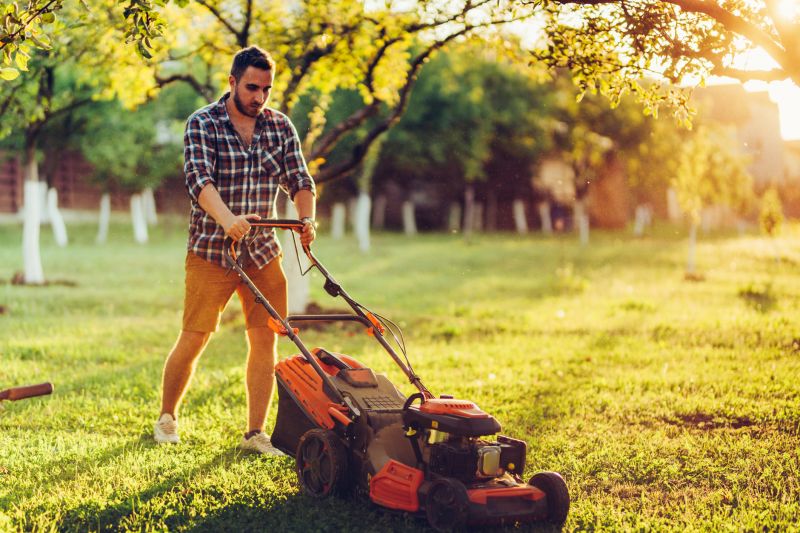Leading Products For Routine Lawn Maintenance To Enhance Your Landscape
Choose from top-rated equipment designed to streamline your scheduled lawn care and achieve professional-looking results.
 Maintaining a healthy and attractive lawn requires a combination of scheduled care and the right tools. Regular lawn maintenance involves tasks such as mowing, fertilizing, aerating, overseeding, and pest control. Having the appropriate products on hand can streamline these activities, making it easier to keep your yard in optimal condition throughout the year. Whether you prefer manual tools or powered equipment, selecting reliable and effective products is essential for achieving consistent results. Proper planning and the right supplies can help reduce the time and effort needed for routine lawn care, ultimately promoting a lush, vibrant outdoor space.
Maintaining a healthy and attractive lawn requires a combination of scheduled care and the right tools. Regular lawn maintenance involves tasks such as mowing, fertilizing, aerating, overseeding, and pest control. Having the appropriate products on hand can streamline these activities, making it easier to keep your yard in optimal condition throughout the year. Whether you prefer manual tools or powered equipment, selecting reliable and effective products is essential for achieving consistent results. Proper planning and the right supplies can help reduce the time and effort needed for routine lawn care, ultimately promoting a lush, vibrant outdoor space.
Top Overall Option
Multi-Functional Lawn Care System
A versatile lawn care system that combines multiple attachments such as mower, aerator, and dethatcher in one machine offers convenience for comprehensive scheduled maintenance. This type of product allows users to perform various tasks with a single device, reducing the need for multiple tools and streamlining yard work. Its adjustable features and compatibility with different accessories make it suitable for various lawn sizes and types. While it may require a higher initial investment, its multifunctionality can support a range of maintenance routines, helping keep your lawn healthy and well-groomed over time.
Types of Products For Scheduled Lawn Maintenances
Lawn Mowers
Essential for regular mowing, available in gas, electric, and reel varieties to suit different yard sizes and preferences.
String Trimmers
Ideal for trimming edges and hard-to-reach areas, helping maintain clean borders and neat appearance.
Lawn Aerators
Used to perforate the soil, allowing air, water, and nutrients to penetrate deeper, promoting healthier grass growth.
Dethatchers
Assist in removing thatch buildup, which can impede water and nutrient absorption in the soil.
Seed Spreaders
Facilitate even distribution of grass seed for overseeding or repair patches in the lawn.
Fertilizer Spreaders
Help apply fertilizers uniformly, supporting consistent lawn nourishment.
Sprayers and Irrigation Systems
Ensure proper watering schedules and efficient application of lawn treatments.
Lawn Rakes
Manual tools for removing debris, thatch, and moss from the lawn surface.
Weed Control Products
Target invasive weeds to maintain a healthy, uniform grass cover.
Pest Control Sprays
Help manage insects and pests that can damage the lawn.
Lawn Rollers
Assist in leveling uneven areas and pressing seed into the soil for better germination.
Soil Test Kits
Provide insights into soil health and nutrient levels to inform maintenance decisions.
Popular Choices
Offering mobility and ease of use, ideal for small to medium-sized lawns.
Powerful tools for precise trimming around trees and edges.
Convenient for aerating without the noise and fumes of gas models.
Simple, effective tools for debris removal and surface leveling.
Easy-to-use for overseeding large areas efficiently.
Lightweight and cordless, suitable for applying fertilizers and pesticides.
Automated options for ongoing maintenance with minimal manual effort.
Popular for understanding lawn nutrient needs and adjusting care routines.
Help define clean borders along flower beds and pathways.
Effective for small to medium lawns to remove thatch buildup.
Useful for trimming and shaping hedges as part of overall landscape maintenance.
Automate watering schedules for consistent lawn hydration.
Popular for leveling and seed pressing tasks.
Wide variety of seed blends suitable for different lawn conditions.
Widely used for uniform fertilizer application across large areas.
Manual tools for targeted weed removal.
Key Buying Considerations
- Lawn size and terrain to determine the appropriate equipment capacity and type.
- Power source preferences such as corded, cordless, or gas-powered for mobility and convenience.
- Ease of use and ergonomic design to reduce fatigue during prolonged use.
- Durability and build quality to withstand regular outdoor use.
- Adjustability features for height, angle, and speed to customize performance.
- Compatibility with additional attachments or accessories for expanded functionality.
- Storage and portability considerations for ease of transport and storage.
- Maintenance requirements and availability of replacement parts.
- Noise levels, especially if you have close neighbors or noise restrictions.
- Budget constraints balanced with the desired features and quality.
- Availability of warranties or customer support from the manufacturer.
- Compatibility with existing lawn care routines and other equipment.
- User reviews and ratings to assess real-world performance and reliability.
- Safety features such as blade guards, safety switches, and secure handling.
- Environmental considerations, if relevant, such as emissions or chemical use.
